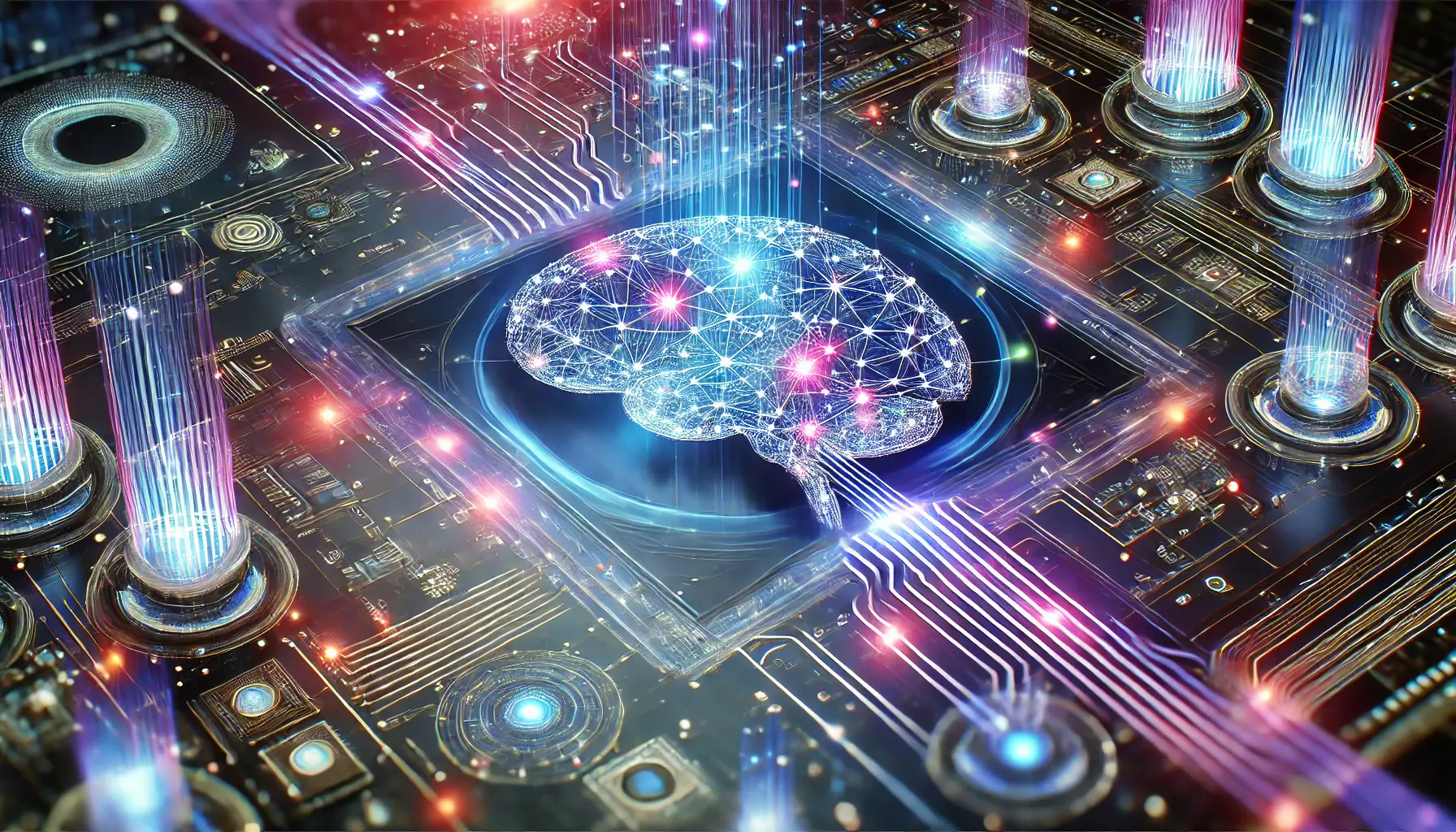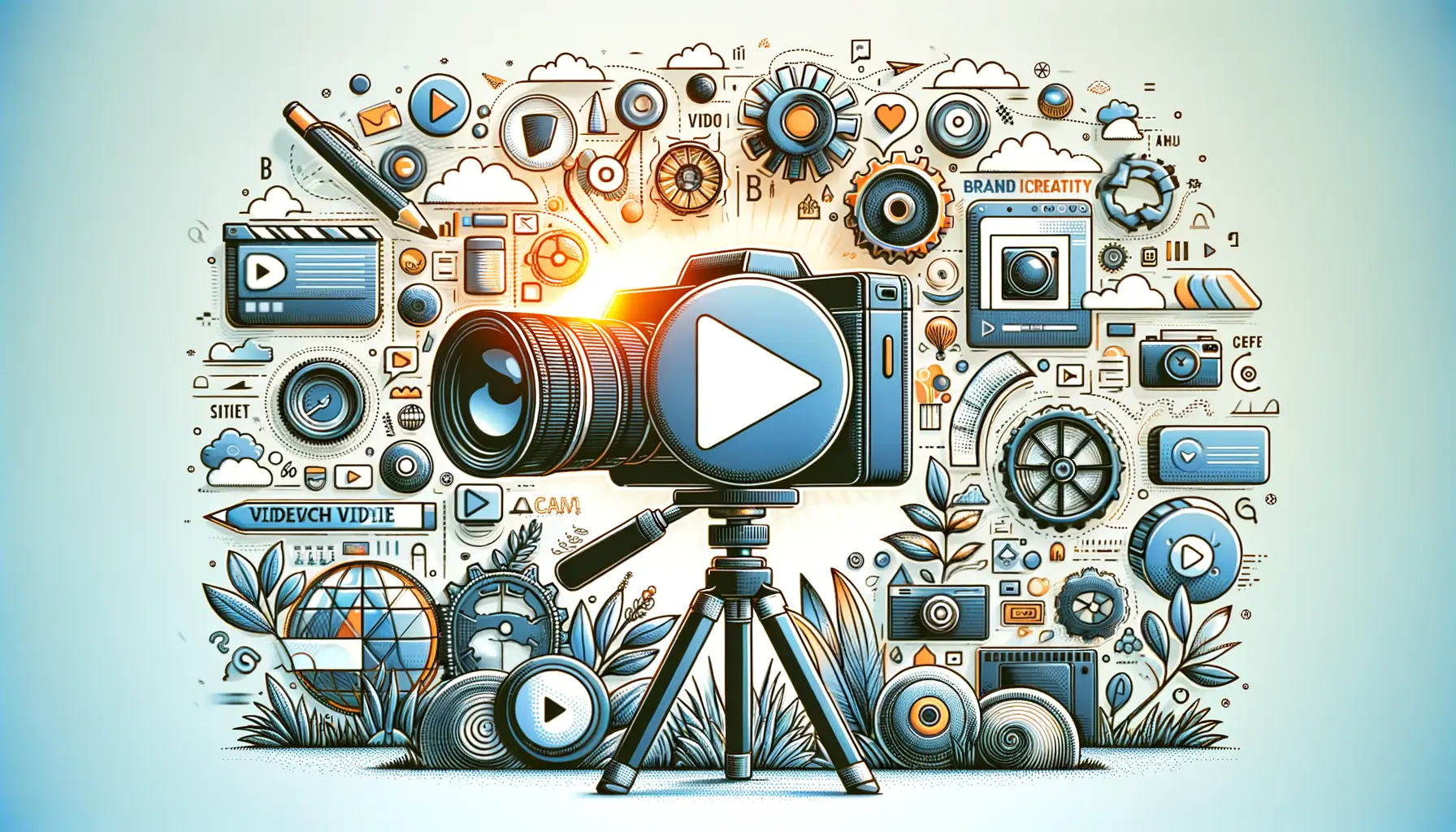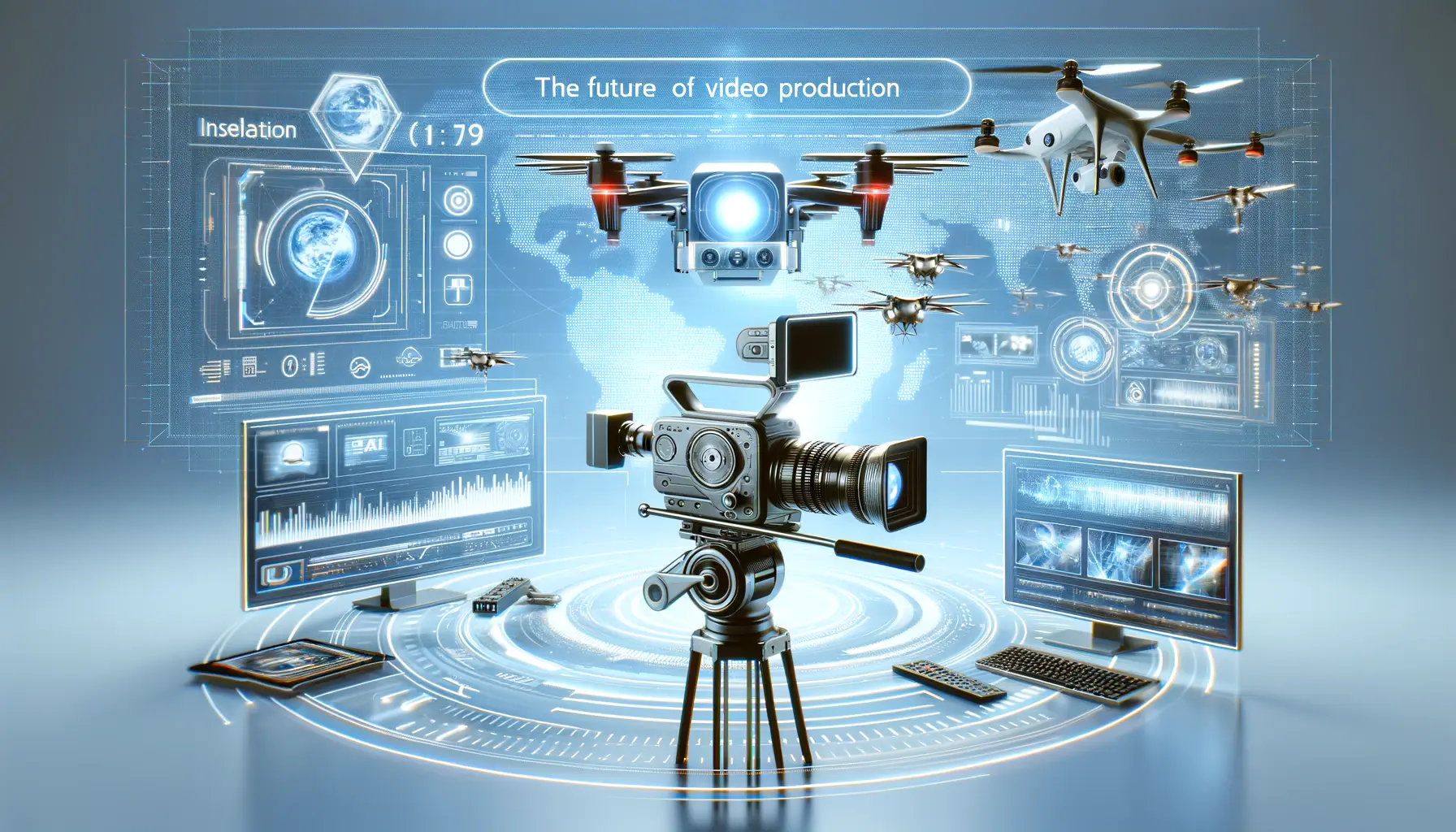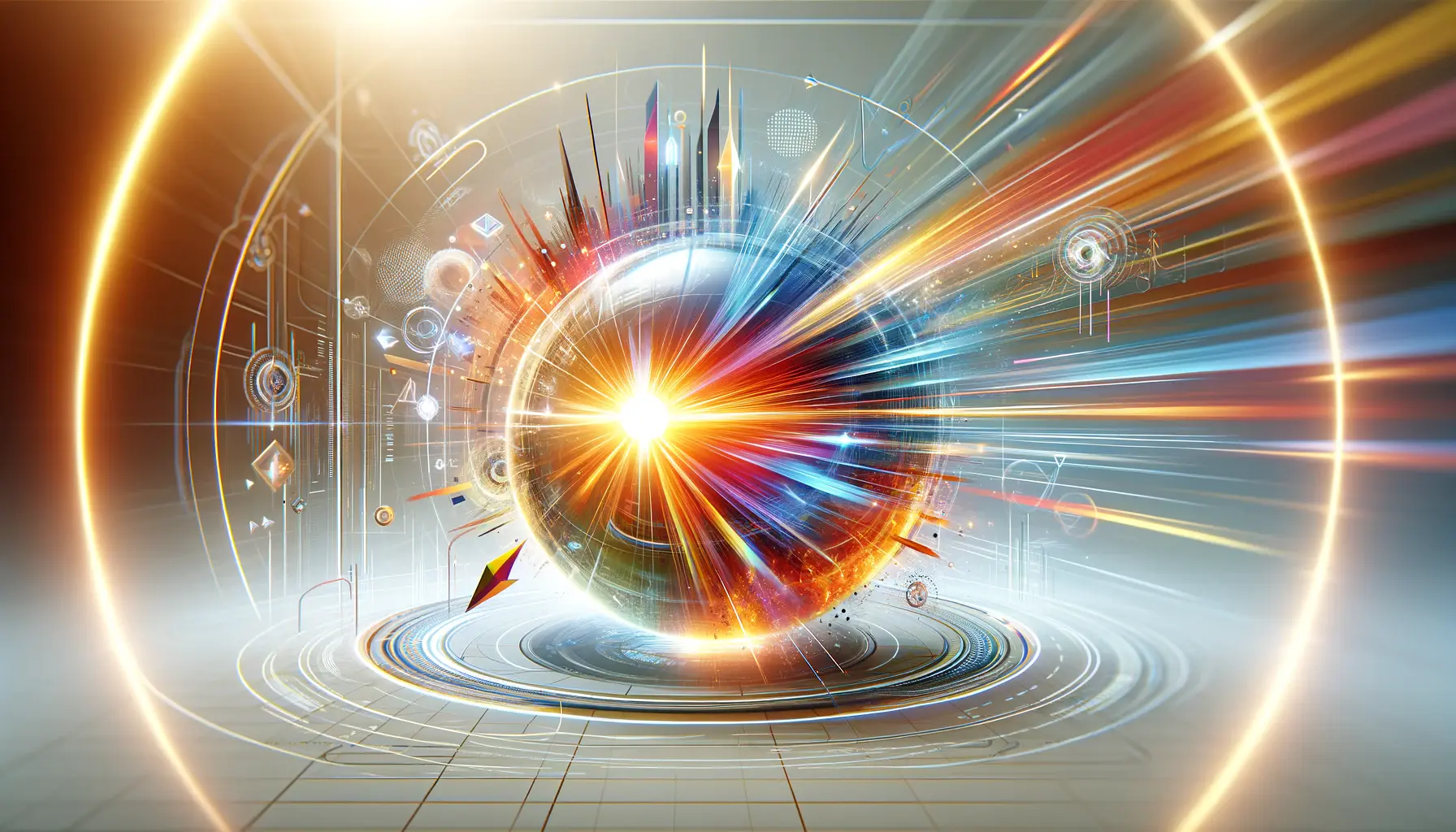The landscape of video content has undergone a transformative journey, marked by significant milestones that have shaped its current state.
From the early days of simple, linear storytelling to the advent of digital platforms that revolutionized how we consume media, the evolution of video content is a testament to human creativity and technological advancement.
This journey has been punctuated by the emergence of OpenAI’s Sora, a groundbreaking development that represents a new era in the creation and consumption of video content.
Sora, with its innovative capabilities, has not only expanded the horizons of what’s possible in video production but also challenged our perceptions of creativity and artificial intelligence.
The significance of Sora in the evolution of video content cannot be overstated.
Before its introduction, video creators and consumers were bound by the limitations of traditional production methods and the creative constraints of human imagination.
However, the advent of Sora has ushered in an unprecedented era of video content creation, characterized by limitless possibilities and unparalleled accessibility.
This part of the article aims to explore the journey of video content evolution, highlighting the pivotal role of Sora in shaping the future of digital storytelling and content creation.
- Foundations of Video Content Evolution
- The Revolutionary Impact of Sora on Video Content Creation
- Challenges and Ethical Considerations in AI-Driven Video Production
- Integrating Sora into Traditional Video Production Workflows
- Future Trends in Video Content with Sora
- Enhancing Viewer Engagement Through Sora
- Collaboration and Community Building with Sora
- Embracing the Evolution: The Future of Video Content with Sora
- FAQs on the Evolution of Video Content and Sora
Foundations of Video Content Evolution
Video content has its roots in the early 20th century, with the advent of motion pictures.
Initially, these were simple, silent films that captivated audiences with their novelty and the ability to capture real-life events.
As technology progressed, so did the complexity and appeal of video content.
The introduction of sound, color, and special effects added new dimensions to storytelling, making it more engaging and immersive.
Television further expanded the reach of video content, making it a staple in households worldwide and setting the stage for the content revolution that would follow with the advent of the internet.
The digital era brought about a seismic shift in how video content was produced and consumed.
Platforms like YouTube democratized content creation, allowing anyone with a camera and an internet connection to become a content creator.
This era saw the rise of user-generated content, vlogs, and the birth of viral videos, which reshaped the landscape of entertainment and information dissemination.
The barriers to entry for content creation were significantly lowered, leading to an explosion in the volume and diversity of video content available.
Transition to Digital and AI Enhancements
As the internet became more ingrained in our daily lives, the demand for more sophisticated and personalized video content grew.
This demand led to the development of advanced video editing software and the introduction of artificial intelligence (AI) in video production.
AI technologies began to assist in editing, creating special effects, and even generating short video clips based on textual descriptions.
These advancements paved the way for more creative and efficient content creation, allowing creators to push the boundaries of traditional video storytelling.
The introduction of AI-driven platforms marked a significant milestone in the evolution of video content.
These platforms utilized machine learning algorithms to analyze viewer preferences, optimize content delivery, and even generate content recommendations, enhancing the user experience.
The integration of AI into video production and distribution signaled a shift towards more personalized, interactive, and engaging content, setting the stage for the next leap in video content evolution: the arrival of Sora.
Sora’s introduction represents a pivotal moment in the evolution of video content, offering unprecedented capabilities in video generation and storytelling.
The Revolutionary Impact of Sora on Video Content Creation
The launch of OpenAI’s Sora has been nothing short of revolutionary, marking a new chapter in the evolution of video content.
Sora, a state-of-the-art AI model, has the capability to generate videos from textual descriptions, thereby blurring the lines between human creativity and artificial intelligence.
This technology has not only expanded the creative possibilities for content creators but also democratized access to video production, making it more accessible to a broader audience.
Before Sora, the creation of high-quality video content was often a resource-intensive process, requiring significant time, technical skills, and financial investment.
The advent of Sora has dramatically changed this landscape, offering a more streamlined and cost-effective approach to video production.
Below, we explore the key impacts of Sora on video content creation:
- Democratization of Video Production: Sora has made it possible for individuals without extensive video editing skills or access to expensive equipment to create high-quality videos. This democratization has opened up new opportunities for storytelling and content creation, enabling a more diverse range of voices to be heard.
- Enhanced Creativity and Experimentation: With Sora, creators can experiment with different narratives, styles, and visual effects more freely. This has led to a surge in creative and innovative video content, pushing the boundaries of traditional storytelling.
- Efficiency and Accessibility: Sora’s ability to generate videos from text has significantly reduced the time and effort required to produce content. This efficiency has made video production more accessible, encouraging more people to share their stories and ideas through video.
- Personalization and Engagement: Sora’s AI-driven capabilities allow for the creation of personalized video content, tailored to the preferences and interests of individual viewers. This personalization has the potential to enhance viewer engagement and satisfaction, offering a more immersive and relevant viewing experience.
Case Studies: Sora in Action
Several case studies highlight the transformative impact of Sora on video content creation.
For instance, independent filmmakers have utilized Sora to produce short films with limited budgets, achieving visual effects and storytelling elements that were previously only possible with significant investment.
Educational content creators have also leveraged Sora to generate engaging and informative videos, making complex subjects more accessible and understandable to a wider audience.
In the marketing domain, brands have begun experimenting with Sora to create dynamic and compelling video ads that are both cost-effective and highly personalized.
These case studies exemplify the broad range of applications for Sora, from entertainment and education to marketing and beyond, showcasing its potential to revolutionize various aspects of video content creation.
The integration of Sora into video content creation represents a leap forward in the democratization of media production, enabling a more inclusive and creative digital landscape.
Challenges and Ethical Considerations in AI-Driven Video Production
While the advent of Sora and similar AI-driven technologies has revolutionized video content creation, it has also introduced a set of challenges and ethical considerations.
The ability of AI to generate realistic video content raises questions about authenticity, copyright, and the potential for misuse.
As we navigate this new landscape, it’s crucial to address these concerns to ensure that the evolution of video content remains a force for positive change.
The challenges and ethical considerations associated with AI-driven video production include:
- Authenticity and Misinformation: The capacity of AI like Sora to create highly realistic videos blurs the line between reality and fabrication, raising concerns about the spread of misinformation and the creation of deepfakes. Ensuring the authenticity of video content has become a significant challenge in the era of AI.
- Copyright and Intellectual Property: AI-generated videos often draw upon existing media and creative works to produce new content. This process raises questions about copyright infringement and the rights of original creators, necessitating clear guidelines and ethical practices in AI-driven content creation.
- Privacy Concerns: The use of AI in video production can potentially lead to privacy violations, especially when personal data or likenesses are used without consent. Establishing robust privacy protections is essential to safeguard individuals’ rights in the digital age.
- Impact on Employment: The automation of video production through AI technologies like Sora may impact the job market for traditional content creators and production professionals. While AI can enhance creativity and efficiency, it’s important to consider its implications for employment within the creative industries.
Navigating Ethical AI Use
To address these challenges, stakeholders in the AI and video production industries are exploring various strategies.
Developing ethical guidelines for AI use in content creation, implementing verification tools to distinguish AI-generated content from human-made content, and fostering transparency around the use of AI in video production are among the measures being considered.
Additionally, engaging in public discourse about the ethical implications of AI-driven video content can help shape a more informed and responsible approach to technology use.
Moreover, the potential for AI to enhance educational content, facilitate storytelling in underserved languages, and support creative expression highlights the importance of balancing innovation with ethical considerations.
By carefully navigating the challenges associated with AI-driven video production, we can harness the benefits of technologies like Sora while mitigating their risks.
It’s imperative to foster an ethical framework that guides the development and use of AI in video content creation, ensuring that technological advancements benefit society as a whole.
Integrating Sora into Traditional Video Production Workflows
The integration of Sora into traditional video production workflows represents a significant shift in how content is created, edited, and distributed.
This fusion of AI technology with conventional filmmaking techniques is not without its challenges, but it also offers unprecedented opportunities for innovation and efficiency.
By understanding how Sora can complement existing workflows, creators can leverage the best of both worlds to produce content that is both captivating and cutting-edge.
Adapting traditional video production processes to incorporate Sora involves several key considerations:
- Scriptwriting and Pre-production: Sora can be utilized in the scriptwriting phase to generate visual concepts or scenes based on textual descriptions. This can aid in the visualization process, helping directors and writers to explore different creative avenues before finalizing their scripts.
- Production: During the production phase, Sora can assist in creating background visuals or special effects that would be costly or time-consuming to produce manually. This not only speeds up the production process but also allows for greater creative freedom in exploring visual storytelling elements.
- Post-production: In post-production, Sora’s capabilities can be particularly beneficial for editing, color grading, and adding visual effects. By automating some of these tasks, Sora can help reduce the workload on human editors, allowing them to focus on the creative aspects of post-production.
- Distribution: Sora can also play a role in content distribution, generating promotional materials and trailers tailored to different platforms and audiences. This personalized approach to marketing can enhance viewer engagement and reach.
Case Study: Enhancing Creativity and Efficiency
A notable case study illustrating the integration of Sora into traditional workflows is the production of an independent short film.
The filmmakers used Sora to generate dynamic background scenes and visual effects, significantly reducing the film’s production budget.
Additionally, Sora was employed in the post-production phase to automate color grading and visual effects, streamlining the editing process and allowing the creative team to allocate more time to narrative development and character design.
This case study highlights the potential of Sora to transform traditional video production, making it more accessible and efficient while opening up new creative possibilities.
By embracing Sora, filmmakers and content creators can push the boundaries of what is possible in video storytelling.
Integrating Sora into traditional video production workflows can significantly enhance efficiency and creativity, offering a new paradigm for content creation.
Future Trends in Video Content with Sora
The introduction of Sora into the video content creation ecosystem has not only transformed current practices but also set the stage for future trends that could redefine the industry.
As we look forward, the potential applications of Sora and similar AI technologies suggest a landscape where the lines between reality and digital creation become increasingly blurred, offering both exciting possibilities and new challenges.
Key future trends in video content creation influenced by Sora include:
- Hyper-Personalized Content: With advancements in AI like Sora, the future of video content is likely to see a surge in hyper-personalized videos, tailored to the individual preferences, interests, and viewing habits of each user. This could revolutionize marketing, education, and entertainment, making content more engaging and effective.
- Interactive and Immersive Experiences: Sora’s capabilities could lead to the development of more interactive and immersive video content, such as virtual reality (VR) and augmented reality (AR) experiences. These technologies, combined with AI-generated content, could create new forms of storytelling and viewer engagement.
- Automated Video Production: As AI technologies continue to evolve, we may see a trend towards fully automated video production processes, where AI handles everything from scriptwriting to editing. This could make video production more accessible and efficient, but it also raises questions about the role of human creativity in the creative process.
- Enhanced Realism in AI-Generated Content: Future developments in AI like Sora are expected to achieve even greater levels of realism in generated video content. This could open up new possibilities for filmmaking, education, and simulation, but it also necessitates careful consideration of ethical implications, such as the potential for misuse in creating deepfakes.
Adapting to the Future Landscape
To navigate these future trends, content creators, industry stakeholders, and policymakers will need to adapt to the changing landscape.
This includes investing in new skills and technologies, developing ethical guidelines for AI use in video production, and fostering a culture of innovation that embraces the possibilities of AI while addressing its challenges.
The future of video content with Sora promises to be dynamic and transformative, offering unprecedented opportunities for creativity and engagement.
As we move forward, the collaboration between human creativity and AI technology will be crucial in shaping the future of video content.
By leveraging the strengths of both, we can create a future where video content is more personalized, immersive, and accessible than ever before, while ensuring that ethical considerations and human values remain at the forefront of technological advancements.
The future of video content with Sora is poised to redefine the boundaries of creativity and engagement, heralding a new era of personalized and immersive video experiences.
Enhancing Viewer Engagement Through Sora
The advent of Sora has not only transformed the production side of video content but also significantly impacted how viewers engage with content.
By leveraging AI to create more personalized, interactive, and immersive experiences, Sora is redefining viewer expectations and setting new standards for engagement.
This shift towards enhanced viewer engagement is crucial in a digital landscape where attention is fragmented and audiences seek more than just passive consumption.
Strategies for enhancing viewer engagement through Sora include:
- Personalized Content Recommendations: Utilizing Sora’s AI capabilities to analyze viewer preferences and behavior can lead to highly personalized content recommendations. This not only improves the viewer experience but also increases the likelihood of viewers discovering content that resonates with them, fostering a deeper connection with the platform.
- Interactive Storytelling: Sora enables the creation of interactive video content, where viewers can choose their own adventure or influence the storyline. This level of interaction engages viewers in a more active role, transforming the viewing experience from passive to participatory.
- Immersive Experiences: With Sora, creators can produce content that is not only visually stunning but also immersive, leveraging VR and AR technologies. These immersive experiences can captivate viewers, offering them a sense of presence and involvement that traditional video content cannot match.
- Enhanced Educational Content: Sora’s ability to generate detailed and realistic video content from textual descriptions opens up new possibilities for educational content. By creating more engaging and visually appealing educational videos, educators can enhance learning outcomes and maintain student interest.
Case Study: Revolutionizing Educational Content
A compelling case study in enhancing viewer engagement through Sora involves the use of AI-generated video content in an educational setting.
A series of science tutorials were created using Sora to generate realistic simulations and visualizations of complex concepts, making them easier for students to understand and retain.
The feedback from students was overwhelmingly positive, with many reporting that the AI-generated content made learning more engaging and enjoyable.
This case study underscores the potential of Sora to revolutionize not only how content is created but also how it is consumed and experienced by viewers.
As we continue to explore the capabilities of Sora and other AI technologies, the potential to enhance viewer engagement is boundless.
By focusing on personalization, interactivity, and immersion, content creators can leverage Sora to meet and exceed the evolving expectations of their audiences.
The future of video content is not just about what is being created but also how it connects with and impacts viewers, making engagement a critical metric of success.
Leveraging Sora to enhance viewer engagement represents a paradigm shift in content consumption, emphasizing the importance of personalization, interactivity, and immersion in the digital age.
Collaboration and Community Building with Sora
The introduction of Sora into the video content creation landscape has not only revolutionized the way content is produced and consumed but also fostered new opportunities for collaboration and community building.
By enabling creators from diverse backgrounds to share their stories more easily and by facilitating the creation of more engaging and personalized content, Sora is helping to knit together a more interconnected and supportive digital community.
This aspect of Sora’s impact highlights the social dimension of technological innovation, where advancements are not just about improving efficiencies or capabilities but also about enhancing human connections.
Ways in which Sora facilitates collaboration and community building include:
- Empowering Creators: Sora lowers the barriers to entry for video content creation, empowering a wider range of creators to share their stories. This diversity enriches the digital landscape with a multitude of perspectives, fostering a more inclusive and vibrant community.
- Enhancing Content Accessibility: By making video production more efficient and less resource-intensive, Sora enables creators to focus on crafting messages that resonate with their audiences. This can lead to the creation of content that is not only more accessible but also more relevant to different communities, thereby enhancing engagement and fostering a sense of belonging.
- Facilitating Collaborative Projects: Sora’s capabilities can be leveraged for collaborative projects, bringing together creators from various disciplines to work on innovative content. This collaborative approach not only results in unique and compelling content but also strengthens the bonds within the creator community, encouraging knowledge sharing and mutual support.
- Building Interactive and Engaging Platforms: With Sora, platforms can offer more interactive and engaging experiences, encouraging users to not just consume content passively but also participate in content creation and community discussions. This level of engagement can transform platforms into vibrant communities where ideas are shared, and connections are made.
Case Study: A Global Storytelling Project
A notable example of collaboration and community building facilitated by Sora is a global storytelling project that brought together creators from around the world to share their cultural heritage through video.
Utilizing Sora’s capabilities, the project produced a series of videos that were not only visually stunning but also deeply informative, showcasing the rich diversity of human cultures.
This project not only highlighted the potential of Sora to bring creative visions to life but also demonstrated the power of technology to connect people across geographical and cultural divides, fostering a sense of global community.
The role of Sora in collaboration and community building underscores the transformative potential of AI in the creative industries.
By breaking down barriers and fostering connections, Sora is not just changing how we create and consume content but also how we relate to each other in the digital age.
As we continue to explore and expand the capabilities of technologies like Sora, the emphasis on community and collaboration will remain a guiding principle, ensuring that technological advancements serve to bring us closer together rather than drive us apart.
Sora’s influence extends beyond content creation, playing a pivotal role in fostering collaboration and community building in the digital landscape.
Embracing the Evolution: The Future of Video Content with Sora
The journey through the evolution of video content, particularly with the advent of OpenAI’s Sora, reveals a landscape rich with innovation, challenges, and opportunities.
As we have explored, Sora represents a significant leap forward in the realm of video production and consumption, offering tools that enhance creativity, democratize content creation, and push the boundaries of traditional storytelling.
The implications of this evolution extend far beyond the technical aspects, touching upon ethical considerations, the potential for enhanced viewer engagement, and the fostering of global communities.
The Path Forward with Sora
As we stand on the brink of this new era in video content, several key insights emerge:
- The democratization of video production through Sora opens up unprecedented opportunities for creators across the globe, reducing barriers to entry and enabling a more diverse range of voices to be heard.
- With the power of Sora, the potential for creating personalized, interactive, and immersive content is vast, offering new ways to engage audiences and enrich the viewer experience.
- However, this evolution is not without its challenges. Ethical considerations, particularly around authenticity, copyright, and privacy, necessitate a thoughtful approach to the integration of AI in video production.
- The future of video content with Sora hints at a landscape where collaboration and community building are central, leveraging technology to connect creators and audiences in meaningful ways.
In conclusion, the evolution of video content, catalyzed by the advent of Sora, is a testament to the transformative power of technology in the creative industries.
As we navigate this new terrain, the balance between leveraging AI for innovation and addressing the ethical implications of such technologies will be paramount.
The future of video content looks bright, with Sora at the helm, guiding us towards a more inclusive, engaging, and interconnected digital world.
The journey of video content evolution is far from over, but with Sora, we are poised to explore new horizons, redefine storytelling, and create content that resonates deeply with audiences around the globe.
FAQs on the Evolution of Video Content and Sora
Explore common questions about the transformative journey of video content and the role of Sora in shaping its future.
Sora, developed by OpenAI, is a text-to-video AI that revolutionizes video production by generating realistic videos from textual descriptions, significantly impacting creativity and accessibility in content creation.
Sora integrates with traditional workflows to enhance efficiency and creativity, allowing for the generation of complex scenes and effects previously unattainable without extensive resources.
Key ethical issues include the potential for creating deepfakes, copyright infringement, and privacy concerns, necessitating responsible use and clear guidelines for creators.
Yes, Sora’s AI capabilities enable the creation of hyper-personalized content, tailoring videos to individual preferences and enhancing viewer engagement.
Anticipated trends include more interactive and immersive experiences, automated production processes, and enhanced realism in AI-generated content, pushing the boundaries of storytelling.
Sora promotes collaboration by enabling creators with diverse skills to work together on projects, fostering community building and knowledge sharing within the digital landscape.
Challenges include mastering the technology, navigating ethical dilemmas, and ensuring content authenticity and copyright compliance in a rapidly evolving digital environment.
Transparency in content creation and the development of verification tools are essential for distinguishing between AI-generated and genuine footage, ensuring trust and authenticity.













